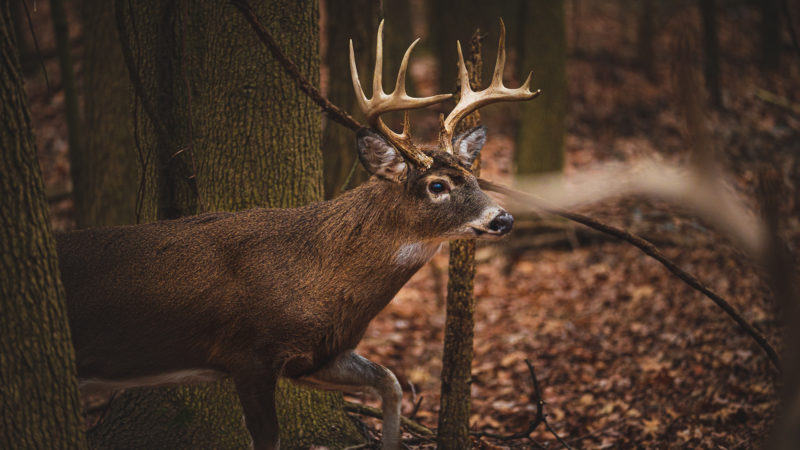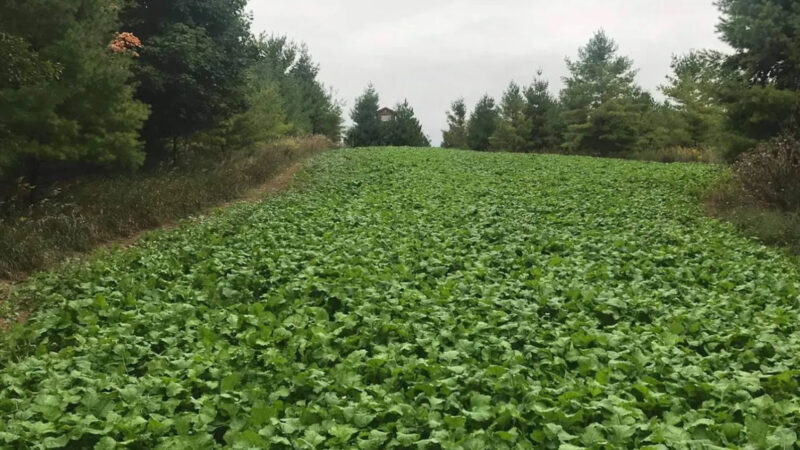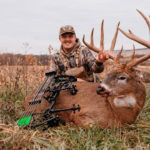The modern-day Northwoods of Wisconsin and Minnesota are not your granddads Northwoods. The far reaches of Minnesota, Wisconsin and northern portions of the Lower and Upper Peninsula of Michigan were sought after whitetail destinations for decades.
Just as surely as Uncle Bob would have deer camp settled and prepared for hunters the day before rifle season, mature bucks were roaming these forests. These regions are just as beautiful now as they were fifteen to twenty years ago when mature bucks roamed the yellow and orange tinted aspen and sugar maple woods on a more regular basis. But something has gone awry.
Many Northwoods hunters would tell you predators and state agencies are chiefly to blame. They aren’t innocent, but hunters themselves must self-evaluate as well. More on this later. No single factor has resulted in the downfall of Northwoods hunting. Here is how the Northwoods of the upper Midwest went sideways, and why it may never reclaim its glory.

Where It All Started
Some hunters may tell you the Northwoods hunting experience was headed south before the 2013 deer season, but the severe winter of 2013-14 took a toll on deer nearly everywhere in the Midwest, and far northern latitudes have yet to recover.
The Wisconsin Department of Natural Resources developed a Winter Severity Index (WSI) for predicting winter’s impact on deer herds. The WSI is calculated by adding the number of days with a snow depth of at least 18 inches to the number of days when minimum temperatures were 0°F or below. Days when both of those conditions occur are scored as 2. They take measurements from December 1st through April 30th and assign a winter as Mild, Moderate, Severe or Very Severe.
The winter of 2013-14 was a harsh winter, scoring a whopping 143 on WSI scale. The extremely mild 2023-24 winter scored an average of 11 in the Northern Forest Zones of Wisconsin. In 2013-14 chilling temperatures began well before the traditional 9-day rifle season, and cold temperatures and deep snow held on late into Spring. Numerous hunters claim that winter is what started it all. To put the winter of 2013-14 into perspective, an average winter is around 50-80 and a winter scoring over 100 would be considered “very severe.”
Predators
Ok, saddle up. Yes, there are more wolves in the Northwoods, and they are taking a toll. Back in 2013, Wisconsin hunters and trappers harvested 257 wolves, a steep 119% increase from the 2012 season. The Wisconsin wolf population was estimated at 834 wolves in 2012, and today, Wisconsin has an estimated 1,007 wolves, Minnesota has an estimated 2,700, and Michigan 762 – which is a 131-animal increase since Michigan’s last survey in 2022.
The 73 confirmed wolf depredations in Wisconsin (as of September 26th, 2024) has already surpassed the 2023 total of 69 wolf depredations, and the 2022 total of 49. Not to mention a duck hunter in Saint Germain Wisconsin was forced to kill a wolf in self-defense.
Rising wolf numbers doesn’t mean your state agency isn’t hearing your opinions. The Michigan DNR implemented their new Deer Management Initiative process in 2024 and wanted more general views on what hunters are seeing.
Chad Stewart is the state’s Deer, Elk, and Moose Management Specialist and he said, “We recognized our proficiency in surveying hunters but acknowledged a gap in gauging general attitudes and views toward deer more broadly.” We want to learn more about how important deer are to our residents, what trends they see in their local areas, and what concerns they may have about deer in our state.”

Wolves aren’t the only culprit to deer predation. Wisconsin’s bear population is estimated at 25,000. Despite Wisconsin seeing its lowest bear hunting harvest in 15 years during the 2023 season, the population remains strong. The low harvest was largely thought to be due to a huge bumper acorn crop keeping bears stationary and less likely to visit bait sites. Michigan has around 12,000 bears and Minnesota’s numbers come in around 15,000.
In 2013, the Wisconsin DNR collared 29 fawns in the Northern Forest Zone during May and June of 2013. Just 44.8% of fawns survived. Predation was determined to cause 68.8% of the fawn deaths with most of these deaths occurring at a young age during the summer months.
Despite the high predator numbers, if you think you’ll be back to hunting or trapping wolves any time soon, hold that thought. Despite the fact Wisconsin hunters killed 216 wolves in less than 3 days during the last wolf hunt in 2021, far exceeding their goal of killing 119, the U.S. District Court for the Northern District of California placed gray wolves under the Endangered Species List in February of 2022 – leaving many sportsmen and women scratching their heads as to why they would be endangered. However, many states have implemented a wolf hunt plan should the wolf be de-listed.

Priority Shift
In addition to rising concerns over predators, there has been an unprecedented priority shift in deer hunters in the last 10-15 years. In my opinion, his has been swept under the rug and isn’t talked about enough. Because of hunters’ newfound desire to chase trail camera photos and grow big deer, hunters are quickly finding that to be a daunting task in the Northwoods of the upper Midwest. I think the abandonment of the Northwoods is a big deal.
Hunters went from just wanting to kill deer, to wanting to kill a big deer. A lot of this has to do with the arrival of trail cameras, specifically cellular models. With the sinking quality of hunting in the Northwoods and a desire to hunt the best whitetail states, hunters are fleeing Northwoods properties in search of prime hunting land.
I speak to hundreds of hunters at my day job in the hunting industry, and I can tell you firsthand that while traditionalist Northwoods hunters love their serene summer cabin in the Northwoods, they are leasing and buying hunting land elsewhere for a higher quality hunting experience. They are leaving behind their once-prized Northwoods retreat and the habitat and quality of the land is deteriorating.
Gary Krueger has been hunting the Wisconsin Northwoods since 1975 and said, “last year we had troubles finding a single doe – it’s changed dramatically. He also admitted, “but so has the deer and agricultural habitat. You hardly hear a gunshot on opening day.”

Many hunters are willing to travel and own land out of state to bag mature deer. To kill big deer, it’s a numbers game. You need to have a lot of them if you want to kill one. While there are still nice deer in the Northwoods, the sheer quantity of big bucks will never compete with the likes of Iowa, Kansas or parts of Illinois and Missouri. For that matter, many Northwoods hunters are buying or leasing land in western Wisconsin, just a few hundred miles away.
According to the National Deer Association’s 2023 Deer Report, 22 of 27 states the NDA received harvest age structure data from were able to provide the percentage of the harvest hat consisted of bucks 3½ years and older. The average percentage of the antlered buck harvest that was 3½ years and older was 40% in 2021. This is near the highest percentage ever reported.
Knowing this, hardcore deer hunters are displaying little patience with the plummeting number of quality bucks in the Northwoods of the upper Midwest. Troy Langan is the VP of Hunting Lease Network and he told me, “We have seen a 10-20% annual increase in leases in the Midwestern states like Nebraska, Iowa, Kansas, Missouri and Illinois.” A clear indication many hunters are fleeing the Northwoods in search of greener pastures.

So while leasing numbers and out of state hunters continue to increase in prime whitetail states, other areas are losing hunters. Michigan DNR numbers show 527,000 deer hunters took the field in 2023, compared to 662,000 in 2013 and a whopping 743,000 in 2003.
Michigan has also reported a decline in youth hunters by 37% since 2013, despite not losing more than 3-4% of youth hunters in any given year from 1996-2014. In 2000, Wisconsin sold 694,712 deer hunting licenses compared to only 554,500 in 2023, a drastic decrease.
If you don’t think aging baby boomers leaving the sport of hunting is a big deal, in 2022, only 10 percent of Michigan deer hunting license buyers were younger than 18 years of age. The average license purchaser was 45 years old. As current hunters age, who will replace them?

 By
By 



